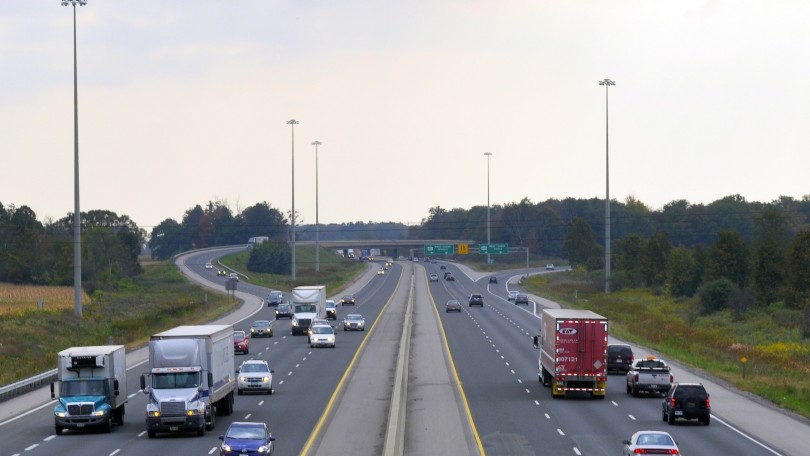Innovation NewsBriefs- The Role of Presidential Leadership Examined
May 7, 2013
The Role of Presidential Leadership Examined
Every two years the University of Virginia’s Miller Center host a transportation policy conference known for attracting prestigious participants and an equally distinguished audience. The inaugural conference held in September 2009, produced a report that generated presidential attention and was praised by President Obama in a Rose Garden ceremony as a model of fresh bipartisan ideas.
This years’s conference was no exception. Held in Washington D.C. on April 29, the conference brought together an impressive group of panelists drawn from among Washington’s best known and most respected transportation insiders. An afternoon session, held at the National Press Club, featured six former U.S. Secretaries of Transportation discussing their experience while in office and offering informal counsel to Charlotte Mayor Anthony Foxx whose nomination for the Secretary of Transportation was announced that very same day. The Secretarial roster included James Burnley (1987-1989), Samuel Skinner (1989-1991), Andrew Card (!992-1993), Rodney Slater (1997-2001), Norman Mineta (2001-2006), and Mary Peters (2006-2009).
Each of the Miller Center conferences has had a different theme. The first conference focused on what the nation’s transportation agenda should look like. The second discussed how to craft a compelling message that captures the attention of the American public. In this year’s conference panelists were asked to consider how the president can influence and lead transportation policy making. The reason for selecting this particular theme did not escape any one. For despite his frequent mention of the need to invest more in infrastructure, President Obama has been singularly unsuccessful in implementing his transportation policy agenda so far:
* His three nearly identical budget proposals —with their requests for $50 billion “for immediate transportation investments,” a larger Transportation Trust Fund (replacing the Highway Trust Fund) and a National Infrastructure Bank— were all declared “dead on arrival” in Congress. None have been adopted as proposed. * His claim that the increased funding he has been asking for will be “fully paid for” with “savings” from the withdrawal of troops from Afghanistan has been dismissed as unrealistic and fictitious by congressional Democrats and Republicans alike. The current spending patterns, even without the extra $50 billion, are unsustainable according to the Congressional Budget Office. “Starting in fiscal year 2015, the trust fund will have insufficient amounts to meet all of its obligations,” says CBO.
* His vaunted “signature” transportation initiative with its goal of making high speed rail accessible to 80 percent of Americans in 25 years has been limping along, with only one project—the California LA-to-SF bullet train –showing a faint promise of realization.
* His influence in shaping transportation legislation has been minimal. Unlike his predecessors, President Obama did not submit a draft transportation reauthorization bill to Congress and his administration was largely absent from the debate on Capitol Hill leading to the enactment of the two-year MAP-21bill.
Contrast the above record with the accomplishments of past presidents and their Secretaries of Transportation, notably in shaping and steering through Congress landmark multi-year transportation legislation: ISTEA in President George H.W. Bush’ administration; TEA-21 in President Bill Clinton’s administration; SAFETEA-LU in President President George Bush’s administration — not to speak of President Eisenhower’s historic Interstate Highway bill.
In all fairness, President Obama has been faced with a vastly different— and more challenging— political and fiscal climate than his predecessors. Concern about mounting federal debt and pressures to constrain the growth of federal discretionary spending have replaced a broad-based consensus in favor of expanding the federal transportation program that characterized the previous administrations. Also, Obama inherited a federal transportation program that had lost its lofty mission and a sense of purpose— tying the nation closer together with a network of superhighways— that everybody could understand and support.
Meanwhile, with gas revenue stagnating, the Highway Trust Fund has lost its capacity to support large-scale infrastructure investments and has come to depend on periodic injections of general fund revenue for its continued solvency. Lastly, two-thirds of Americans currently oppose increasing the gas tax according to the latest Gallup poll— which explains why there is a bipartisan lack of enthusiasm for increasing the tax on Capitol Hill. At the same time, no one has been able to come up with another credible source of revenue to supplement or replace the fuel tax. In other words, there are good and solid reasons why President Obama has been unsuccessful in advancing his transportation agenda. Whether – and how – he can be more successful in his second term was the subject of a spirited debate during the Miller Center’s third conference, appropriately subtitled “A Blueprint for Presidential Leadership.” ###
Below, in a condensed form, are some of the salient views, perspectives and opinions we heard expressed by panelists in the formal sessions and in informal conversations we had on the sidelines of the conference— with a few annotations of our own (in italics) We have followed our customary practice of no personal attributions. Funding remains the biggest challenge for the Obama administration. As already mentioned, no one has been able to come up with a credible source of revenue to supplement or replace the stagnating gas tax revenue, and raising the federal fuel tax has been ruled out by Democrats and Republicans alike. Many panelists thought that a long-term revenue solution for transportation is more likely to be obtained in the context of a “grand bargain” and/or tax reform than as a stand-alone measure or in the context of the next surface transportation reauthorization. However, the prospect for a “grand bargain” (or even a “limited grand bargain”) remains uncertain.
“Why is something as fundamental as transportation so difficult to fund?” asked one of the panelist. The answer came in comments from several panelists: partly, because the nation is facing unprecedented fiscal constraints, partly because transportation is not at the core of Presidential priorities, and partly because the public does not perceive the nation’s infrastructure to be in a state of crisis. “Infrastructure advocates are hard pressed to give examples of crumbling infrastructure” one participant told us. “By and large and in most places the nation’s highways and bridges are holding up pretty well.” It’s also a matter of developing more effective messaging, panelists agreed: advocacy for increased infrastructure funding must be brought down to a level that an average citizen can understand (e.g. will additional money improve my commute?)
A growing fiscal involvement on the part of the states was noted by many panelists With the prospect of increased federal funding highly uncertain, states are raising additional revenue to repair and modernize their aging infrastructure. Some states, such as Virginia and Maryland, have found new ways to raise money. “This is not devolution; it’s states properly assuming a responsibility for keeping their own assets in a state of good repair,” one participant told us. With many states willing to devote more funds to transportation , will Congress feel less presure to come up with additional resources? That is the question many participants were posing on the sidelines of the conference. “In the absence of a revenue solution I am not sure we’ll have a multi-year reauthorization,” one panelist observed. “An annual bill is plausible” another one echoed. They may be right. To finance a six-year program at current spending levels would require roughly $320 billion ($53 billion/year). Trust Fund revenues and interest over the same period are expected to bring in only $240 billion according to CBO— leaving an unfunded shortfall of $80 billion. “The user pay principle has collapsed” in the words of one panelist. With the Highway Trust Fund requiring a $40 billion boost of general fund revenue over the last three years, one no longer can claim that transportation is paid for with a user fee, he said. States are likewise turning away from user fees in their search for additional transportation revenue and are embracing transportation-dedicated sales taxes as a less controversial alternative to raising fuel taxes. As for how Secretary-designate Anthony Foxx can best “get up to speed,” the six former Secretaries of Transportation offered much practical advice: “Establish your leadership as early as you can” … “Seek the best advice from the bureaucracy” … “Get to know the Department and congressional leaders” … “Get out and meet the people who do the work every day; the Department has some tremendous people who can help you” … “Learn to work on a bipartisan basis” … “Remember that you work for the President; he’s the one that got elected, you didn’t get elected. And your job is to implement his policies as he suggests”
Left undiscussed — since the Miller Center prides itself as being strictly non-partisan— were some of the sharper questions raised in the press in recent days concerning the state of presidential leadership: “Is Obama Already a Lame Duck?” (Peggy Noonan in The Wall Street Journal, May 3). Is Obama “a presidential bystander?” (Dana Milbank in The Washington Post, April 30). Can Obama “bend Congress to his will?” (Greg Sargent in The Washington Post, April 30); Is Obama’s prestige on the decline? (Charles Krauthammer in The Washington Post, May 2).
Also left unanswered was a question weighing heavily on every transportation stakeholder’s mind: will the mid-term elections affect the shape of the next transportation reauthorization? And if so, how?
KEN ORSKI
Editor/Publisher
Innovation NewsBriefs
www.innobriefs.com
— Posted on July 18, 2013 at 7:41 pm by Ann

